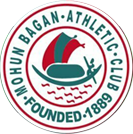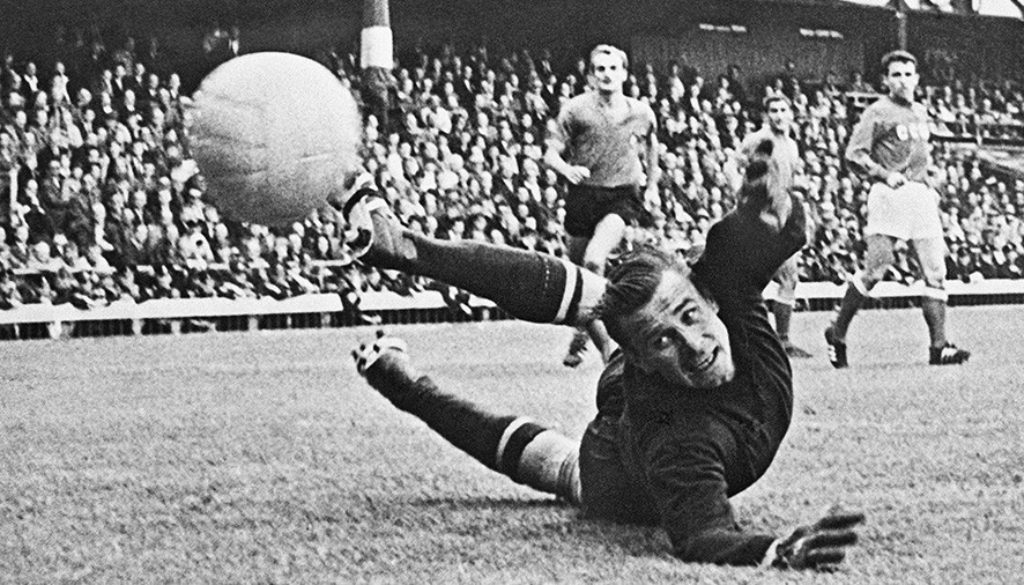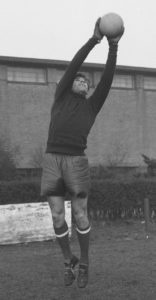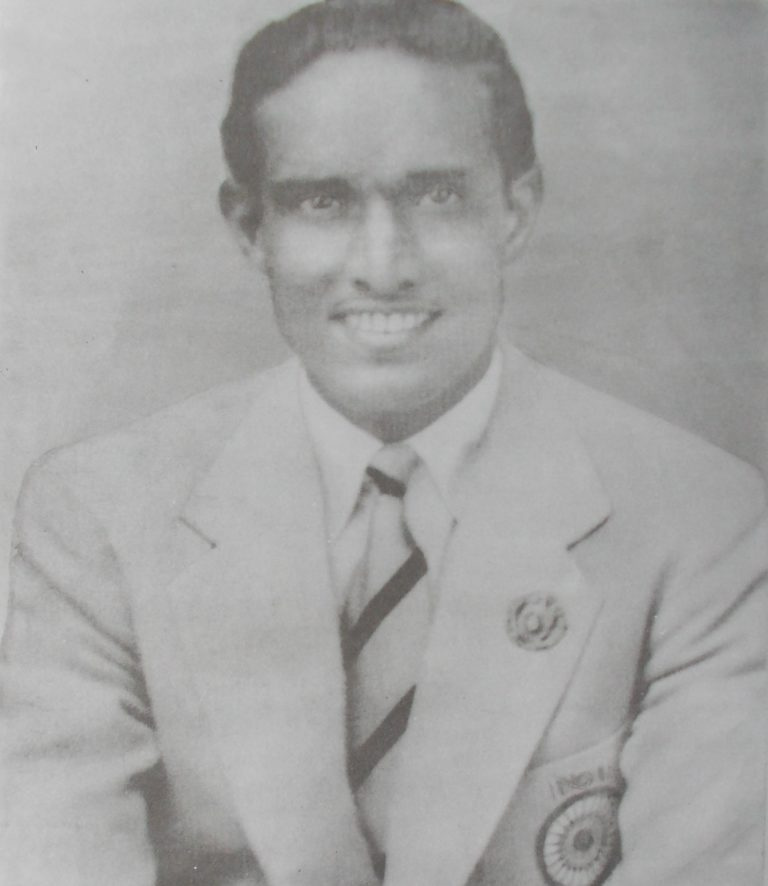When Lev Yashin played against Mohun Bagan
Somnath Sengupta : Throughout its long & storied history Mohun Bagan has played against many foreign teams as well as foreign players. From Fiorentina’s Swedish legend Kurt Hamrin to modern icons like Roger Milla & Oliver Kahn, the list of names is long & illustrious. It can be argued that amongst these foreign teams, the greatest was Soviet Union’s superb side that toured India in 1955. Brimming with superstars & legends of the game, it can even be said that USSR team was the best team to ever play in India.
Despite attempts to keep the two separate, sports & politics are often intertwined with each other. Instances like “ping pong diplomacy” between China & USA in 1970s as well as “cricket diplomacy” between India & Pakistan further prove this point. Soviet Union’s 1955 trip to India was a similar attempt of diplomacy through football. It was precursor to a landmark year in history of Indo-Russia relationship. In June of the same year Jawaharlal Nehru visited USSR while November saw an extensive, legendary tour by Nikita Khrushchev & Nicholai Bulganin.
The Soviet football team landed in India in January, 1955. It was a full strength team coached by Gavriil Kachalin, who led them to three World Cup qualifications. They were captained by Igor Netto, arguably the greatest ever Russian midfielder. Forward line contained “Russian Pele” Eduard Streltsov, who would go on to score 25 goals in 38 matches for USSR & Valentin Ivanov, future joint top scorer in both 1960 European Championship,1962 World Cup. Other stars in the squad were Spartak Moscow’s all time top scorer Nikita Simonyan & full-back Mikhail Ogonkov. Their most important player was undoubtedly the 26 year goalkeeper Lev Yashin. He had made his national team debut a year before and was already making a name for himself with a revolutionary style of goalkeeping. A great testament to the quality of that Soviet squad was 15 members of the same squad would be part of the team that won gold medal in 1956 Melbourne Olympics.
The Soviets played their first match symbolically on 26th January, 1955 at Hazaribagh against AIFF President’s XI. AIFF team was captained by Sailen Manna & contained other Mohun Bagan players like Ratan Sen as well as future Mohun Bagan coach Amal Dutta. Unfortunately, they were no match for the Russians, losing 7-0 with Boris Tatushin scoring a hattrick.
USSR toured India extensively, playing matches in Benares, Lucknow, New Delhi, Jubbulpore, Chennai, Trivandrum, Bangalore, Hyderabad, Mumbai & Kolkata. Each match was of 60 minute duration. The Soviets who were used to 90 minute matches won every game, often without breaking a sweat. An Indian Express match report describes their playing style, “Then they proceeded to play a brand of football that could be described as phenomenal. Crisp, fast, accurate passing combined with perfect ball control and lightening speed…And yet their football was simple, the main ingredients being technique and timing”.
Lev Yashin didn’t concede a single goal in India. In March when the Soviets played in Chennai a young Peter Thangaraj observed Yashin & moulded his game after the great Russian to become arguably India’s best ever ‘keeper.
The Soviets came to Kolkata on final lap of their marathon tour. It was in Kolkata that three of the most high profile matches of that tour would take place. Mohun Bagan & East Bengal were sharing the same stadium at that time. On this ground USSR was scheduled to play Mohun Bagan on 3rd March, East Bengal on 5th and Indian team the day after.
Mohun Bagan had an extremely strong team at that time – arguably the best in India alongside the great Hyderabad City Police side of 1950s. In 1954 Mohun Bagan had completed Calcutta League-IFA Shield double. 1955 was again a good year for the Green & Maroons as they successfully retained Calcutta League & won their first ever Rovers Cup title after defeating Mohammedan SC in final.
In defence Mohun had Sailen Manna along with another great defender of that era – Sushil Guha. It was an era of attacking football and Mohun Bagan boasted of a brilliant forward line. The wings were manned by P Venkatesh, who had joined from East Bengal and Runu Guha Thakurta. In MA Sattar and Samar “Badru” Banerjee Mohun Bagan had two intelligent and skillful strikers who were adept at both scoring goals as well as setting up scoring opportunities. Their spadework was often turned into goals by Krishnachandra “Keshto” Paul. A prolific center forward who was famous for his heading ability, Keshto Pal would go on to become the first Indian player to score a hattrick in IFA Shield final in 1956. Chuni Goswami had made his debut in 1954 but was yet to become a first team regular.
On 3rd March Mohun Bagan started the match in a 2-3-5 formation. Swaraj Chatterjee played in goal with Sushil Guha & Purnendu Barua as two full-backs. The midfield trio was made up of Subhas Sarbadhikary, Subhasis Guha & Ratan Sen, who was playing his third match against the touring USSR side. Venkatesh & Guha Thakurta started on wings with Samar Banerjee, Sattar & Samar Dutta playing as three strikers. For the Soviets the team list read as follows – Lev Yashin; Anatoliy Porkhunov, Anatoliy Bashashkin; Yuriy Sedov, Yuriy Voynov, Igor Netto; Boris Tatushin, Valentin Ivanov, Nikita Simonyan, Sergey Salenikov, Anatoliy Ilyin.
Unfortunately, like other teams that faced the Soviets, Mohun Bagan too would prove to be no match for them. Simonyan scored the opening goal on 7th minute before adding another goal 16 minutes later. On 24th minute Tatushin scored USSR’s third goal. In second half Mohun Bagan tried to press forward but couldn’t get past Yashin as the match finished with a 3-0 loss.
USSR would repeat the same scoreline versus India and East Bengal, against whom Dynamo Kiev’s Oleg Makarov played in place of Yashin.
In hindsight, it is perhaps not surprising that Mohun Bagan lost to the full strength USSR team. Even during Indian football’s golden years Indian players struggled against physically fit & well regimented Eastern European sides. In 1952 Olympics bare feet Indian players struggled on a frozen turf in Helsinki, losing 10-1 to Yugoslavia. Four years later, 4-1 loss to Yugoslavia & a 3-0 loss to Bulgaria ended India’s hopes of an Olympic medal. The narrow 2-1 loss to Hungary in 1960 Olympics was probably India’s best performance against any Eastern European nation. At club level, East Bengal suffered an embarrassing 13-1 loss against Dynamo Kiev in 1953 further highlighting the quality difference between football in two countries.
In 1955 India travelled to USSR later in the year as part of a return goodwill tour. That team contained many players who would finish fourth in Olympic Games few months laters. Sadly, India struggled with the condition and lost five out of seven matches – the 11-1 loss to USSR in September remains India’s heaviest defeat of all time.
USSR enjoyed a golden era between 1955 and 1960. They won Olympic gold in 1956, reached World Cup quarterfinal in 1958 before their greatest triumph, winning 1960 European Championship. Mohun Bagan would have to wait for 23 years to get their best result against a Eastern European team, a 2-2 draw with Ararat Yerevan in 1978 IFA Shield final.



